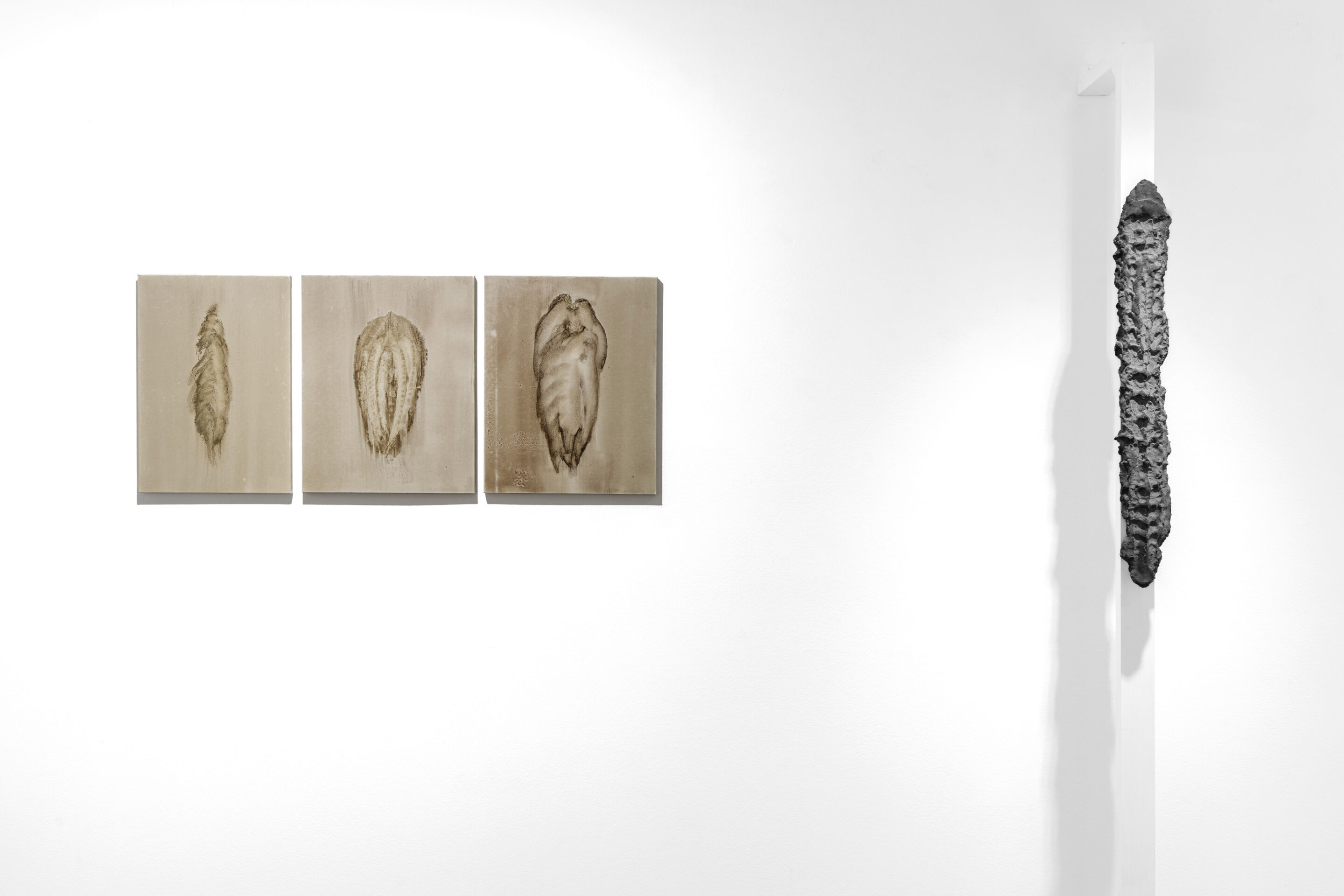curated by Chiara Gatti with an essay by Caterina Riva
The Cagliari-born artist presents an unprecedented project, Filira (Phillyrea), showcasing a new series of works in an exhibit designed as an all-embracing environment where canvases and sculptures are connected to each other in a systematic and all the same unitary overall vision. Known for his exploration of ash generated by the combustion of plants from his garden in Calasetta, which he turns into a plastic medium to create sculptures characterised by a fragile appearance, Biggio has recently experimented with a form of painting using the juice of phillyrea berries that he squeezes to produce a dark ochre colour with purple nuances. Just as his series of ash sculptures is the result of an authentic reflection on the cycle of life and the elements, the medium of painting transcribes imprints of nature, in its metamorphosis and consumption.
Lingering in the background is the reference to a Greek myth: the nymph Philyra (Filira), daughter of Oceanus and Tethys, was loved by Chronos from whom she tried to escape by transforming herself into a mare. But Chronos, transforming himself into a stallion, reached her and raped her. Philyra gave birth to a son, a hybrid creature, the centaur Chiron. Shocked at the sight of her son, she asked Zeus to be transformed into a shrub that would take her name, phillyrea. With the extract of the berries of this plant, Biggio uses the canvas to trace the vestiges of an ephemeral vegetation.
.
A Biggio_portrait_ph Barbara Pau
Alessandro Biggio
(Cagliari, 1975), lives and works in Cagliari and Calasetta. He graduated in economics and now dedicates himself to aesthetic research. In his artistic practice, the process of exploration and experimentation on matter plays a fundamental role. His sculptures, installations, and monotypes are always the result of layered gestures and phases, whose final result represents a possible moment of balance, between control and loss of control over the process, between decay and form. His participation in solo and group exhibitions in public and private spaces includes: Gherdëina Contemporary Art Biennale, Museo MAN of Nuoro, Fondazione di Sardegna, Museo Marino Marini in Florence, Gallerie d’Arte Moderna e Contemporanea of Cagliari, Galerie Stadtpark Krems, GAMeC in Bergamo, CLER in Milan, Fondazione Bartoli-Felter in Cagliari. In 2020, he was awarded the Pollock-Krasner Foundation Grant.

